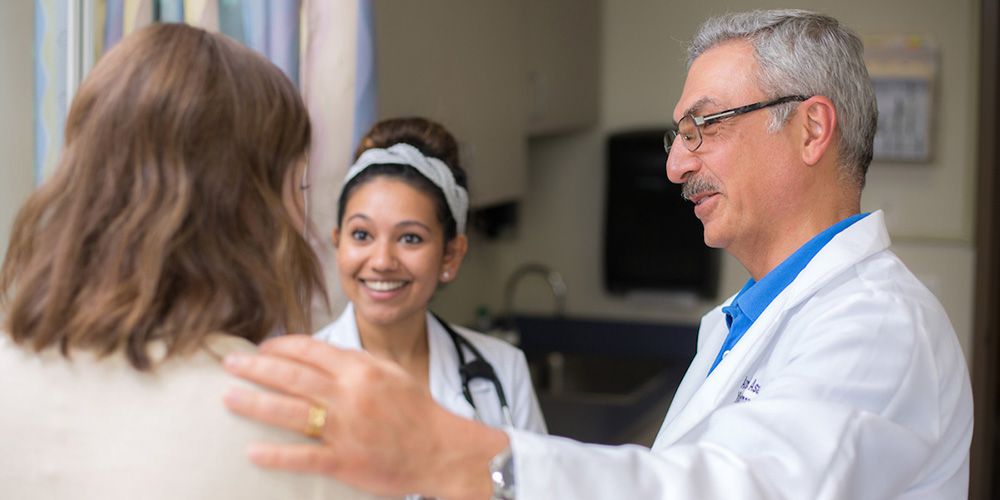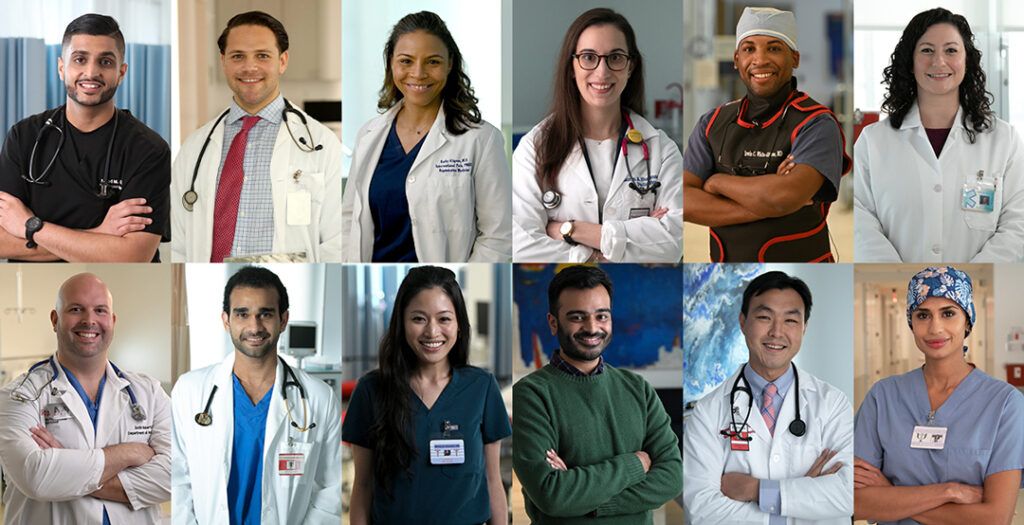Many physicians are drawn to internal medicine, as becoming an internist allows them to treat an extensive range of diseases and conditions. It’s also among the most in-demand specialties in today’s physician workforce.
In your pursuit of the right specialization for your career goals, you may have wondered, “What is an internist, exactly?” We take a closer look different aspects of this dynamic medical specialty including responsibilities, salary and medical training requirements.
What is internal medicine?
Internal medicine covers an array of different organs throughout the human body — more specifically, the internal organs like the heart, kidneys, liver, and lungs. This requires acute expertise in how each of these organs operates, as well as an understanding of the details of how they interact with one another.
Physicians who specialize in internal medicine are taught to focus on the bigger picture. They use their extensive training and knowledge of the entire human body and its organ systems to provide the precise medical guidance needed for disease prevention and management, as well as routine patient care.
When comparing an internist vs. a family medicine practitioner, there are some notable differences. Internal medicine physicians typically only treat adults, and they can provide specialized care in areas that many family physicians may not. Upon completing residency, internists have the opportunity to continue their training in specialized areas such as cardiology, pulmonology, gastroenterology, and more.
Internists commonly address the following medical conditions:
- Diabetes
- Hypertension
- Elevated cholesterol
- Heart disease
- Kidney issues
- Endocrine issues
- Blood disorders
- Chronic obstructive pulmonary disease (COPD)
Patients may be referred to an internist after receiving a particular diagnosis, but internal medicine physicians can also play a pivotal role in the diagnosing process. Patients experiencing unexplained chest or abdominal pain, for example, can benefit by being evaluated from an internal medicine perspective.

How Much do internists make?
According to the Bureau of Labor Statistics in 2023, physicians who practice Internal Medicine make an average wage range of $195 – 225k per year. The salary range is dependent on the location, subspeciality and experience of the physician.
An Internist’s salary will also depend on the setting because these professionals not only work in hospitals, but also work in education, private practice and outpatient centers.
What does an internist do?
An internist’s duties can be somewhat similar to those of a family medicine physician. They act as primary physicians for most of their patients, providing yearly exams and overall health management. But their thorough training on internal organs qualifies them to treat and diagnose both chronic and short-term diseases.
An internist’s patient base is typically comprised of adults, because the chronic conditions they treat are afflictions that tend to present themselves in people as they age. In addition to annual wellness exams, internists closely monitor a patient’s body systems to help detect the presence of disease.
To accomplish this, internists are trained to perform a variety of different screenings and scans. Examples of some of these diagnostic tests include:
- Breast exams
- Testicular exams
- Prostate exams
- Blood sugar tests
- Blood pressure checks
- Cholesterol tests
- Bone scans
- Urine tests
- MRI scans
The role of an internist can be challenging, as they often deal with multiple conditions that can grow more complex as time passes. They also act as advocates for their patients, referring them to specialists, as needed, while remaining an active part of the greater care team.
It’s not uncommon for internal medicine physicians to work with the same patients for years, if not decades. This often results in strong, trusting relationships between the doctor and their patients.
Another critical duty within internal medicine is aiding in disease prevention. In addition to performing regular screenings and well checks to detect early signs of disease, part of prevention includes maintaining a healthy lifestyle. Internists counsel patients on lifestyle improvements that can help avoid disease. Patient education on matters like diet, exercise, stress reduction, and avoiding tobacco and overconsumption of alcohol can be key.
Are there different types of internists?
As outlined above, general internists can treat a range of different diseases. But there are a variety of subspecialty opportunities that allow internal medicine physicians to focus their efforts on one specific part of the body or a particular type of condition.
Some subspecialty options within internal medicine are:
- Allergy and immunology (immune system)
- Cardiology (heart and vascular system)
- Critical care medicine (care of patients in intensive settings)
- Endocrinology, diabetes, and metabolism (glandular and metabolic disorders)
- Gastroenterology (gastrointestinal system, liver, and gall bladder)
- Geriatric medicine (care of older patients)
- Hematology (blood)
- Hospice and palliative medicine (care of patients with serious illness)
- Infectious disease (bacterial, viral, fungal, and parasitic infections)
- Nephrology (kidney)
- Neurocritical care (serious diseases of the nervous system)
- Oncology (cancer)
- Pulmonary disease (lungs and respiratory system)
- Rheumatology (joints and musculoskeletal system)
- Sleep medicine (sleep disturbances and disorders)
Pursuing a subspecialty as an internist generally requires an additional one to four years of post-residency training in a concentrated fellowship program. Internal medicine physicians who complete a specialized fellowship are typically no longer referred to as ‘internists’ and instead adopt the specialty-appropriate physician title. For example, cardiologists, oncologists, and endocrinologists are all examples of specialized internists.
How do you become an internist?
The process of becoming an internal medicine physician begins similarly to that of all aspiring doctors. You’ll first need to earn a bachelor’s degree from an accredited institution so that you can qualify for admittance to a Doctor of Medicine (MD) program.
Once you’ve earned an MD from an accredited medical school, you’ll begin a three-year residency program in internal medicine. The number of internal medicine residency programs has grown steadily over the last decade, reflecting today’s increasing demand for skilled internists.
As an internal medicine resident, you’ll need to complete the final phase of your licensure exam, earning a passing score on the USMLE Step 3. You will then be eligible to become board-certified in internal medicine.
Those hoping to pursue a subspecialty can then transition into a post-residency fellowship program for additional training. Some internists also opt to complete a research fellowship, since their work requires an advanced understanding of the research methods and statistics involved in new and advanced diagnostic processes and treatment options.
Prepare for your journey toward internal medicine
According to internist demographic data, there are currently more than 5,800 internists employed across the U.S., and demand continues to grow. If you’re intrigued by the process of using your specialized training to help detect, treat, and even prevent a litany of different diseases, you might thrive in this dynamic medical specialty.
As a future internist, your hands-on, specialized training will begin during residency. That’s why it can be critical to set yourself up for success in securing the type of residency position you’re hoping for.
You can learn more about how to prepare by visiting our article “How to Land the Medical Residency You Want: 7 Criteria You’ll Be Evaluated On.”


